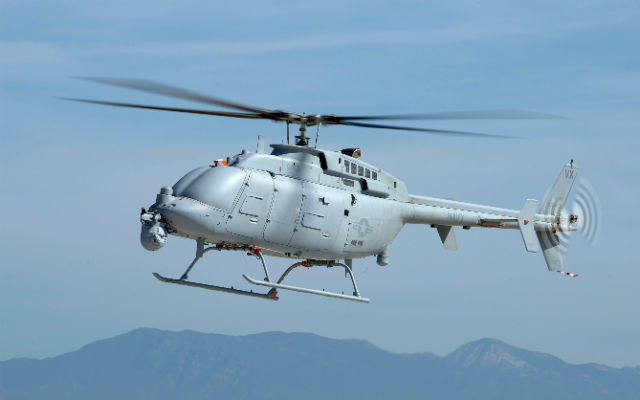The US Navy has completed development testing of the Northrop Grumman MQ-8C Fire Scout rotary-wing unmanned air vehicle, paving the way for operational trials aboard the service’s littoral combat ship (LCS).
Over the 18-month evaluation campaign carried out at Point Mugu naval air station in California, the Bell Helicopter 407-derived MQ-8C achieved 2,699 USN-mandated test points over 327 flights, amassing 455h since tests began in October 2013.
Trials included operating from a destroyer in 2014 to observe how the UAV handled the pitch and roll of the vessel, sensor testing, and utilising the ship’s automatic identification system, says Thomas Twomey, manager of strategy and business development for Fire Scout at Northrop Grumman.
Twomey says that few modifications were required during the test, and its software remained the same until tweaks were required for sensor integration.
“We’re really proud of the fact that we could get through the flight tests successfully with only minor changes,” Twomey says. “Throughout all of the tests, we were at least 115% above the navy’s test threshold requirement. We greatly exceeded the navy’s expectation.”

Northrop Grumman
Now the company will develop the operational testing plan with the MQ-8C aboard the LCS; the smaller Schweizer 333-derived MQ-8B model of Fire Scout is already operating from Singapore on the USS Ft Worth.
As the MQ-8C is brought into operations alongside the MQ-8B, there will be a mix of the Fire Scout variants operating from the navy’s vessels for the foreseeable future.
There are currently 22 operational B models that have accumulated some 15,000 flight hours. A total of 19 C models are on order – including two research aircraft – with 16 options. Five C models are accounted for in the Department of Defense's FY2015 budget, Twomey notes.
Source: Flight Daily News


























